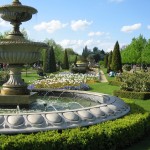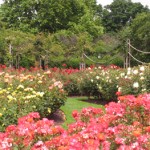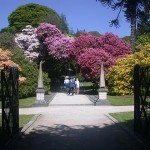There are a total of eight Royal Parks within all greater London: St. James’s Park; The Green Park; Hyde Park; Kensington Gardens; Richmond Park; Greenwich Park; The Regent’s Park and Bushy Park. Thus far, I have visited three of these: St. James’s Park; Greenwich Park and The Regent’s Park. Each park was very different, yet shared a similar history.
St. James’s Park, originally created by King Henry VIII as a personal deer park for hunting, is located in Westminster. The park has been remodeled several times, including once for King Charles II in the 1600’s and again in the first half of the 1800’s by John Nash. The closest tube stops include Piccadilly Circus, Charing Cross and, of course, St. James’s Park.
This park is absolutely massive. You could easily spend an entire day here. Perhaps the most interesting feature of this park is its wildlife. There were waterfowl of all kinds paddling and preening in around the long lake that stretches through the park and placards along the way that discussed each species. The asphalt walkways circling the lake contain markers that indicate that the Princess Diana Memorial Walk trails through the park. With all the flora and fauna found inside St. James’s Park, it only seems appropriate to commemorate one of Great Britain’s most beloved members of the royal family here, amidst such beauty.
St. James’s Park is a popular spot for tourists and locals alike. There were many families, especially, snapping pictures of the scenery, but also native Brits jogging or enjoying lunch or a book in the park. What I did find interesting was that there were very few non-whites in the park. I remember seeing one tourist family of what appeared to be an Indian descent inside the park, posing for family snapshots by a knotty tree, and a two black women with strollers and little, skipping girls around the age of five, who walked along the sidewalk on the outskirts of the park, but never entered it.
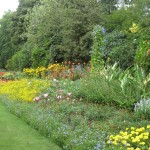


Greenwich Park is equally interesting. We walked through this park on our way to The Royal Observatory, which is located almost in the center of the park. The Observatory was commissioned by King Charles II (see hyperlink above) in 1675 and was designed by Christopher Wren, the architect who was responsible for countless famous buildings around London including St. Paul’s Cathedral and others circa the Great Fire of 1666. The park is inaccessible via the tube, but many buses such as the 188 and 53 run through Greenwich at frequent intervals.
This park, which is divided by the Prime Meridian features much more open space than either St. James’s or The Regent’s Park. There are large expanses of lawns – slightly browning in areas – with trees dotting the landscape throughout, but no fences, hedges, walls or other structures that create intimate spaces within the park. As we walked through the park I noticed many families and couples strolling through the park, and several joggers. There was a friendly yet rather skinny dog sniffing around the sneakers of several students. He carried a ball in his mouth and seemed to plead with his icy blue eyes for a playmate. He wandered around without direction and I wondered if he was blind, or homeless, and watched the ribs shift under his taut skin.
The abandoned dog, the slightly sunburned grass and the lack of flora cast a feeling of melancholy upon me as I walked through the park. I didn’t feel joy or peace in Greenwich Park as I did in St. James’s or The Regent’s Parks. Even the view of the city from the top of the hill upon which the observatory is situated depressed me. It is a view full of skyscrapers, power plants, power lines, smoke stacks no longer in use. When I am in the city for too long, I crave green space, but in Greenwich Park, I found myself preferring the city.
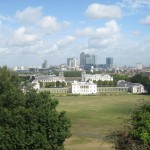
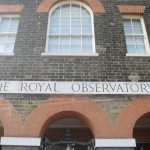
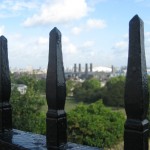
The Regent’s Park, located between Paddington and Camden Town, is accessible via several tube stops, including; Marylebone, Great Portland Street and, of course, Regent’s Park. The park was originally another of King Henry VIII’s deer gardens (see hyperlink above) and features the Queen Mary’s Garden, an area of the park blooming with over nine thousand begonias.
The Regent’s Park is one of the most stunning places, if not the most, I have been lucky enough to visit in my life. The walkways reach out through rows of shaped cylinders of shrubbery and tall hedges line the walkway, creating walls of green that flank beds of bright flora. Fountains pour out clear water that glints in the sun, cascading like icicles ripped from rooftops in the winter. There are areas reserved strictly for children, areas with cafes, an outdoor amphitheatre and a community sports and recreation centre. The overall feeling that I had being in the park was one of peace and serenity. Car horns, sirens, the pounding of joggers’ feet and the wails of children with scraped knees or simply a poor temperament could not be heard in the near silence of the park. For one who is quick to grow weary of the London hustle-bustle, The Regent’s Park serves as the quintessential getaway.
All of the Royal Parks I have visited thus far each have their own distinguishing characteristics, and a unique essence. But don’t take it from me. Hope on the tube and go find yourself some green.
